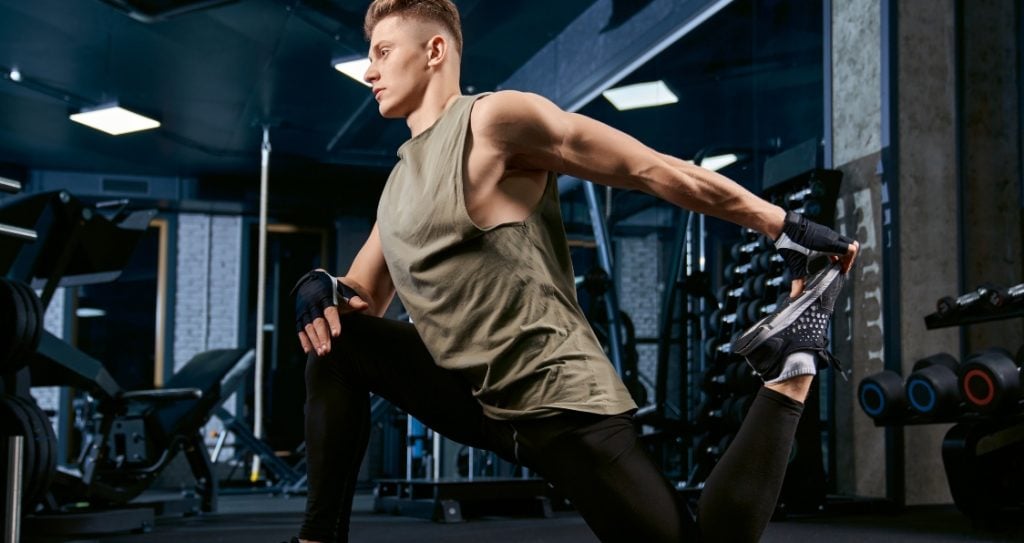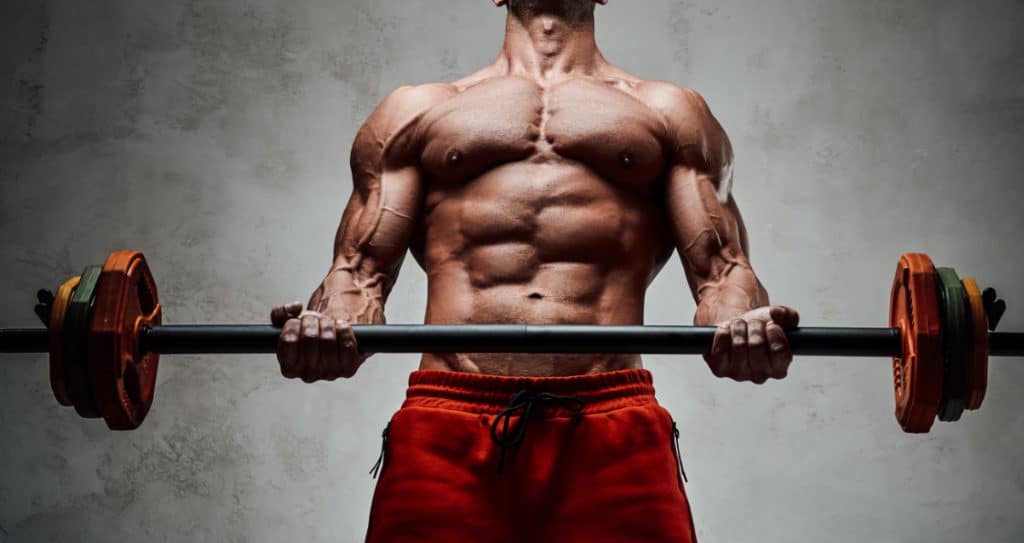Is stretching worth your time?
Lifting weights and doing cardio are no-brainers two of the most effective ways to improve your health and fitness. When you walk into a gym, this is what you’ll find everyone doing. However, there’s another physical activity that many omit, although when you do it, it can greatly improve your workouts and reduce your risk of injury — dynamic stretching.
It’s probably pretty apparent that stretching can increase your flexibility, but it’s not something many gym-goers put time into. Furthermore, when lifters do take the time to include stretching into their plan, whether it be for warmups or post-workout, they don’t perform it the most effective way. Below, we’ll be diving into the most common forms of stretching, as well as when and how to do each.
Benefits of Stretching
Stretching has its benefits, but if you don’t stretch properly, it could end up being a waste of time or even do more harm than good, so keep reading until the end to learn how to implement an effective stretching plan. For now, we’ve put together a list below for the benefits you could receive if you stretch correctly.
Stretching Benefits
- Increased range of motion (ROM)
- Decrease chance of injury
- Increased athletic performance
Types of Stretching
There are four types of stretching: active, passive, dynamic, and proprioceptive neuromuscular facilitation (PNF). Below, is a brief breakdown of each one.
- Active – Muscle lengthens and contracts while being stretched. E.g., flexing your ankle back and forth.
- Passive – Holding a pose. E.g. a distal hamstring stretch.
- PNF – Stretching that involves opposing resistance against a muscle. E.g., having a physical therapist push against your leg for 30 seconds while you push in the opposing direction while supine.
- Dynamic – Stretching that involves light movement. E.g., swinging your leg back-and-forth.
Dynamic, active, and passive stretching — static — are the three most utilized because PNF stretching requires a partner, and not everyone trains with someone else. Stretching is effective for improving your flexibility and rehabbing an injury, and all of these stretching techniques have their time and place, but when you should use each is what separates their effectiveness.
Dynamic Stretching Vs. Static Stretching
Up to this point, you now know not all stretching is the same. Some stretches involve movement to get your blood pumping and your muscles, tendons, and joints loose while others are static and held for a period. One isn’t necessarily better than the other, although it depends on the situation.
Dynamic Stretching
Dynamic stretching is stretching when you move. For example, arm circles to warm up your shoulders and leg swings to warm up your legs. Typically, you’ll see athletes performing these types of stretches before a game to help warm up.
In fact, a study found dynamic stretching improves athletes’ sprint performance. (1)
Static Stretching
Static stretching is holding a stretch without movement. For example a standing hamstring and quadricep stretch for a count of 30 seconds. If you ever see anyone stretching in a gym, this is usually what you’ll see.
When to Use Each Type of Stretching
Although both forms of stretching have their advantages, each one is better for different events, so you do not necessarily need to be using them both before a workout or competition. Below, we’ll cover when it’s ideal to use dynamic or static stretching.
When to Use Dynamic Stretching
Dynamics stretching is best to perform before working out or a sporting event. That’s because it will help increase your athletic performance by warming up your muscles and increasing your mobility.
This 2019 study found dynamic stretching to be an effective mechanism for increasing ROM and reducing muscle stiffness. (2)
When to Use Static Stretching
You should save static stretching for after your workout or sport. Studies actually show that doing static stretching before a workout can lower your strength. (3) On the contrary, it can make you more flexible if you do it after any physical activity. Another benefit of doing static stretching after your workout is that your muscles are warmer, which means you’ll be able to stretch them out more, so an increased range of motion is possible here.
Moreover, research has shown that stretching can reduce your muscles soreness after working out. (4)
What to Do Before and After a Workout
Warming up and stretching before and after completing a workout can be excellent for the health and safety of your body, helping to get you ready to train and reducing the risk of injury. You’ll just need to implement the correct protocol.
Before a workout, you should dynamic stretch and after a workout, you should static stretch, however, there are other things you can do to enhance their effects. To make things easy for you, we’ve created an order of the activities you should do before and after working out.
- Light cardio: E.g., a light jog on a cardio machine such as a treadmill for five minutes.
- Dynamic stretching: E.g., arm swings.
- Warm-up with light weight: E.g., using 50% of your workout weight your first set of bench press.
- Workout
- Cooldown: E.g., a light walk for five minutes.
- Static stretching: E.g., Standing quad stretch.
Warming up before your workout is important to get your body temperature up to increase your performance and reduce your chance of injury, (5) and active cooldowns are proven to improve your recovery process post-exercise. (6)
Final Word
Stretching has many potent benefits for your body, including preventing injury and increasing your ROM. Dynamic stretching and static stretching are two of the most common types of stretches and knowing when to do each can positively affect your workouts. In general, you should start your workout with dynamic stretches and finish it with static stretching.
Share this article on social media for all your fellow lifting brothers and sisters and follow us on Instagram, Facebook, and Twitter.
References
- Zmijewski, P., Lipinska, P., Czajkowska, A., Mróz, A., Kapuściński, P., & Mazurek, K. (2020). Acute Effects of a Static Vs. a Dynamic Stretching Warm-up on Repeated-Sprint Performance in Female Handball Players. Journal of human kinetics, 72, 161–172. https://doi.org/10.2478/hukin-2019-0043
- Iwata, M., Yamamoto, A., Matsuo, S., Hatano, G., Miyazaki, M., Fukaya, T., Fujiwara, M., Asai, Y., & Suzuki, S. (2019). Dynamic Stretching Has Sustained Effects on Range of Motion and Passive Stiffness of the Hamstring Muscles. Journal of sports science & medicine, 18(1), 13–20.
- Gergley J. C. (2013). Acute effect of passive static stretching on lower-body strength in moderately trained men. Journal of strength and conditioning research, 27(4), 973–977. https://doi.org/10.1519/JSC.0b013e318260b7ce
- Andersen J. C. (2005). Stretching before and after exercise: effect on muscle soreness and injury risk. Journal of athletic training, 40(3), 218–220.
- Fradkin, A. J., Zazryn, T. R., & Smoliga, J. M. (2010). Effects of warming-up on physical performance: a systematic review with meta-analysis. Journal of strength and conditioning research, 24(1), 140–148. https://doi.org/10.1519/JSC.0b013e3181c643a0
- Van Hooren, B., & Peake, J. M. (2018). Do We Need a Cool-Down After Exercise? A Narrative Review of the Psychophysiological Effects and the Effects on Performance, Injuries and the Long-Term Adaptive Response. Sports medicine (Auckland, N.Z.), 48(7), 1575–1595. https://doi.org/10.1007/s40279-018-0916-2










